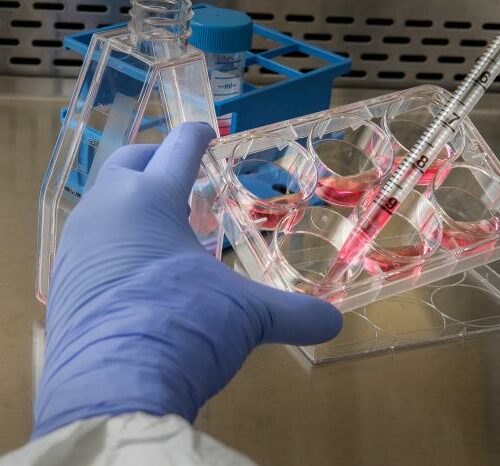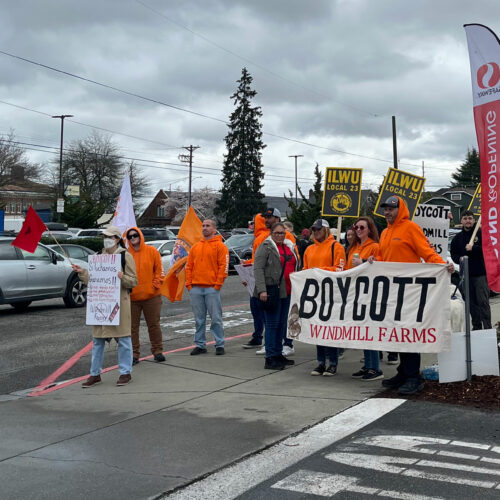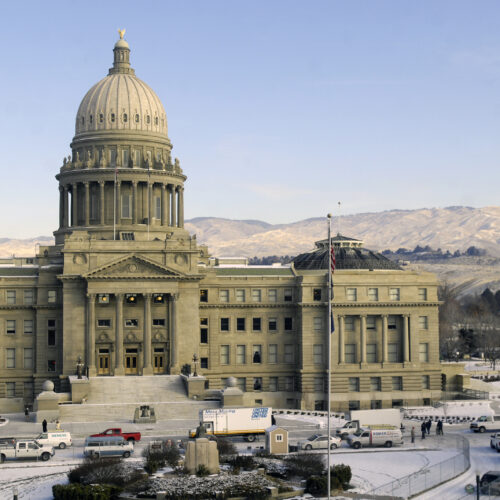
In Northwest States, Newly Jobless Wait For Unemployment Systems To Catch Up
Listen
QUICK UNEMPLOYMENT LINKS FOR:
Washington / Oregon / Idaho
The unemployment rolls in Washington, Oregon and Idaho continue to swell like never before.
Washington’s Employment Security Department said Thursday that close to half a million workers have applied for jobless benefits over the past three weeks. Oregon recorded just shy of 270,000 new claims in the same period, which is far more than the 147,800 net job losses in Oregon over the whole duration of the Great Recession. And 31,000 Idaho residents filed as the state shed jobs for the third consecutive week. Idaho’s Department of Labor said Thursday that nearly 78,000 people have filed claims since mid-March.
There are hundreds of thousands of additional jobless workers waiting in the wings to file claims, including part-time and gig economy workers and self-employed who qualify under expanded federal benefits. But they are temporarily frozen out. The wait for overloaded unemployment systems to catch up is leaving some of them frustrated or anxious.
Katrina Thiessen joined the the unemployed ranks last month when the Olympia seafood restaurant where she worked as a server closed because of the coronavirus pandemic. Thiessen applied for jobless benefits right away and was promptly denied due to having insufficient work hours under current state eligibility rules.
“My coworkers and I that don’t qualify were all like, ‘Yes, we’re going to qualify!’ Thiessen said in an interview. “Every week it’s like, they’ll turn their system off for the weekend and they’ll update it is kind of our hope.”
Thiessen paid attention as Congress passed a $2 trillion pandemic relief package, formally known as the CARES Act, last month. That bill broadened eligibility for unemployment benefits and increased the size of weekly checks. The boost is coming soon, but not yet reflected in the state computer systems that process claims in Washington state and Oregon.
“I know it’s a very unprecedented time and hard to hire people and hard to train people,” Thiessen said Wednesday. “There’s what, 300,000 people or more now in Washington that have filed for unemployment — maybe half a million. So, I do understand that factor. But it is still very frustrating for all of us sitting here wondering when we’ll get paid.”
The anxious, upset or agitated comment threads on state agency and federal politicians’ social media posts show there are many, many other people in this situation. They are ride-hailing app drivers, hairdressers, freelancers and independent contractors, to name a few.
“To all Washingtonians, we hear you,” said Commissioner Suzi LeVine, who heads the Washington Employment Security Department. “While I wish we could update our system faster, please know we are working around the clock to get you the money you need and give you a little peace of mind as quickly as we can.”
During a media briefing Thursday, LeVine offered a firm date of April 18 to begin accepting applications from laid off workers who were previously ineligible for benefits. Oregon’s Employment Department is also scrambling to get checks for that group flowing by late this month.
LeVine said her staff is bracing for a second wave, a “tsunami” as she called it, when the expanded, federally-funded benefits are set up.
“The very good news is that this torrent of demand represents hundreds of thousands of people who are newly eligible for unemployment assistance,” LeVine said. “We don’t know exactly how many people will come in and apply once we have implemented the changes in our system after the 18th. But we expect it to be significant and we are doing all we can to be ready.”
LeVine and her Oregon counterpart said claims will be paid retroactively to people who were stuck in limbo for the past few weeks.
Once all the updates fall into place, LeVine says the jobless benefits for workers who were earning up to $62,500 annually could equal or exceed their former paychecks. That is because the federal pandemic relief includes an extra $600 per week to nearly everyone on unemployment. That unusual supplement lasts for up to four months and is retroactive to March 29.
“If you add $600 to what I’m getting, that’s enough to live on,” said Anna Ozzello of Seattle, who filed for unemployment on Monday. “If I can’t pay rent, I am on the street. It is really important. It is really helpful”
Ozzello was laid off last month from a company that processed visas for travel to Russia. Demand for visas dried up when people stopped traveling. She hopes to be hired back in mid to late summer, but in the meantime she expects to collect slightly more on unemployment than she was earning at her former job.
University of Oregon economics professor Tim Duy said the extra payout and expanded unemployment eligibility will be useful to stop a downward spiral in the economy.
“It’s not optimal that it is taking so long,” Duy said in an interview. “Unfortunately, the systems are not made to process this many claims at once. But at least we’re seeing the money start to move into the system. So, that is going to help provide a backstop that will help minimize some of the second-order conditions.”
Duy said it is hard to predict when unemployment will peak. He foresees some hiring coming back quickly when stay-at-home restrictions lift. But he said the damage in other sectors, like travel, may take a long time to fully recover.
Both Oregon and Washington say they added hundreds of new unemployment office staffers to answer questions and process claims in the last few weeks and are still bringing on more. Washington and Oregon unemployment offices are closed to in-person visits because of the coronavirus risk. The only way to get customer service is online or by phone. The phone lines frequently have long wait times, if callers even get through in the first place.
LeVine said newly jobless folks in Washington can help their own cause and reduce frustration by reviewing a brand new eligibility checker, by watching an instructional video and then following the unemployment application checklist before picking up the phone to call, or better, going online to file an initial claim.
“The more prepared people are, the more likely they are to get their money quickly,” LeVine said Thursday.
OPB reporter Meerah Powell contributed to this report.
Related Stories:

Washington, Idaho rank high for public health emergency preparedness
Both states saw steady or increased funding for public health, but Idaho still among lowest for vaccinations.

How does climate affect your life? Tri-Cities survey open now
Cities, towns and counties are starting to plan for a future with climate change. Now, the Tri-Cities area is asking people about regional hazards and historical trends. (Credit: Simon Foot

Con manifestación en Tacoma, Unión de Campesinos llama a boicot contra Windmill Mushrooms
Personas de diferentes lugares del estado de Washington viajó a Tacoma para manifestarse en apoyo a los trabajadores agrícolas frente a una tienda Safeway el lunes por la tarde.













